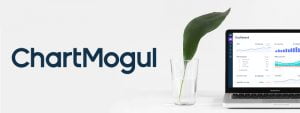For SaaS companies it is easy to get an uneven idea of financial position because of the way they charge. In this article we look at how SaaS companies can manage their revenue so that they know how they are really performing.
SaaS revenue recognition is an essential consideration for SaaS founders. Because the customer is engaged on a subscription basis, you must keep delivering the service to your customers and that means managing your funds to keep the service running.
SaaS Pricing Strategy
If you provide a SaaS service, there are three ways to charge. You can get a payment upfront covering the whole period or the first year or six months of the period. Or you can get payment at the end of the period of the contract or you can bill monthly or quarterly throughout the contract period.
Each method has benefits and drawbacks. Billing upfront gives you a nice bag of cash, but you then must carefully manage that cash while you provide the service. Billing at the end of the contract or every year on the anniversary of signing the contract, leaves you with a hole in your revenue as you provide the service without any return until you can send the first bill. Billing monthly or quarterly will even out your revenue but mean the client must process the payment every month or quarter and may not suit their budgeting cycle. Getting SaaS revenue recognition right is key.
Whatever way you bill your clients, you will need a simple and consistent way to manage your revenue. Luckily, there is an International Financial Reporting Standard (IFRS) that covers this.
Managing Your Revenue & Tracking Towards Profit
Unlike the cash in the bank or your debtors, your revenue figures under the accrual method show what you have actually earnt. This is the amount you make from services delivered and also accounts for upfront payments where the services have not been delivered as yet.
The accrual Profit & Loss report allows you to do a simple check into the financial performance of your business. If your costs are higher than your revenue, its also an indication that some operational adjustments might be neccessary. You can either sell more, optimise on a more profitable service line or cut expenditure so that revenue overtakes costs. This is the simple definition of being profitable – a key KPI along with these other SaaS metrics.
International Financial Reporting Standard 15
IFRS 15 comes from the International Accounting Standards Board (IASB) and was put in place in 2018. In Australia, we follow the International Financial Reporting Standards so this applies to any SaaS company operating here. In the US, there is a corresponding standard FASB Accounting Standards Codification (ASC) 606.
In the simplest form, IFRS 15 means that SaaS providers recognise the revenue from a contract when the service is provided. This usually means that the revenue is recognised monthly.
For example, the SaaS provider sells a two-year contract for $2,400 to provide a service to backup data every month. This contract would translate into $100 revenue per month for the SaaS provider. The SaaS provider will recognise $100 revenue every month if the amount is paid and billed at the beginning of the contract or billed and paid at the end of every year or even if it is billed and paid monthly.
- The actual standard for SaaS revenue recognition allows for the complexity of many SaaS contracts. It sets out five steps.
- Identify the contract. The standard starts with the contract that sets out services provided the fees paid for those services. The standard also says that the SaaS provider must have a reasonable expectation that it will be able to collect the fees.
- Identify performance obligations. The performance obligations are the SaaS services that the client is paying for. If there are bundle of services, then the attempt is made to identify each separate service.
- Determine the transaction price. In this step, the SaaS provider works out the amount the customer will pay for the service. It also takes into consideration when the payment is made and the cost of financing.
- Allocate the transaction price. In this step, the provider identifies the cost of each performance obligation even if those obligations were sold as a bundle.
- Recognize revenue as performance obligations are satisfied. The SaaS provider is now ready to allocate revenue on the basis that it has met some part of the performance obligations.
There are some other factors to be taken into consideration for SaaS revenue allocation. You can find the full standard on the IFRS web site.
If you need help in working with this standard or managing your SaaS revenue recognition contact Fullstack for help. Also check out our piece on growing a SaaS business.
Was this article helpful?
Related Posts
- Growing a SaaS Company: The 3 Drivers
Managing a software as a service (SaaS) business so that it is successful has more…
- SAAS metrics: Five Measures That Really Matter
When you're a SaaS business, metrics really matter. Due to their unique operating and revenue…
- ChartMogul: Getting Key Metrics for SaaS Businesses
SaaS success lean on being smart with your SaaS metrics. ChartMogul is a powerful analytics…
- SAAS metrics: Five Measures That Really Matter
When you're a SaaS business, metrics really matter. Due to their unique operating and revenue…
















